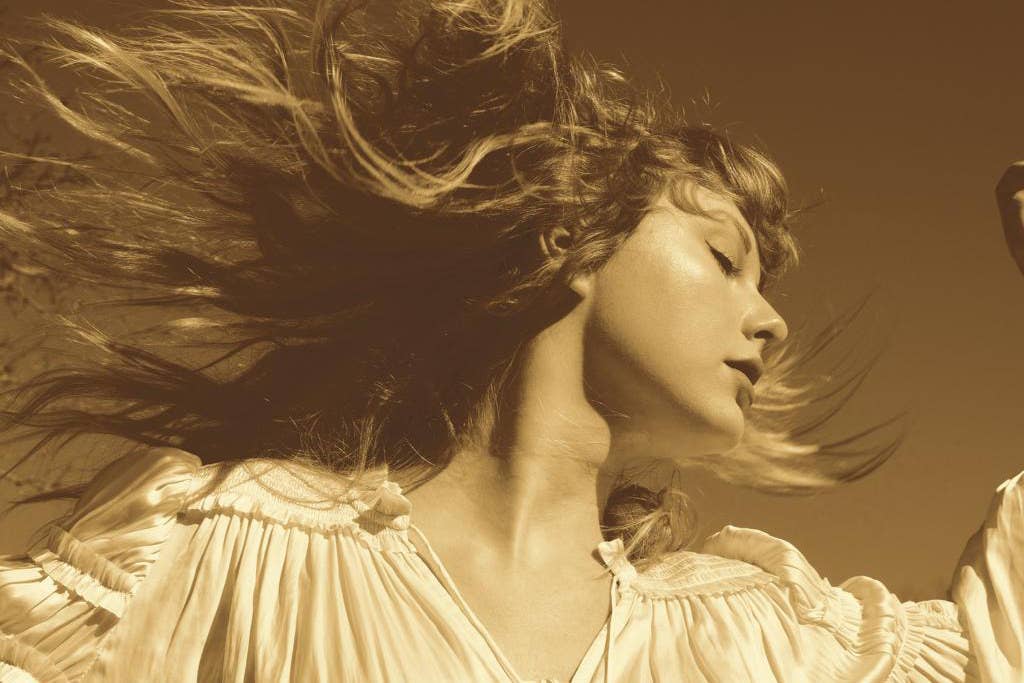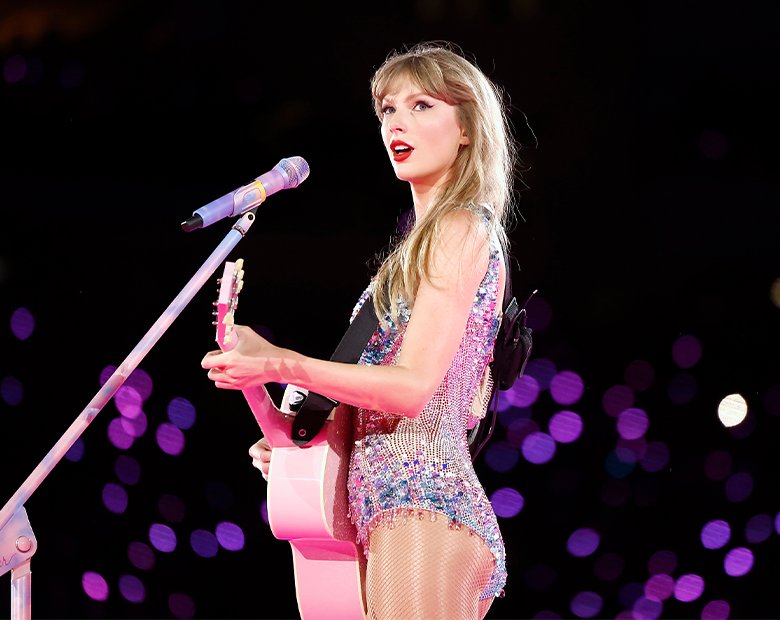
When Taylor Swift announced, in August 2019, her “absolute” intention to rerecord her first six albums, fans immediately raised questions.
Would she opt to make any significant changes to the songs — their instrumentation, or even their lyrics — or would each rerecording simply be a carbon copy of its original? Which album would she decide to record first? Would she go in chronological order of their releases? Or might she even rerelease her biggest singles as a kind of greatest hits collection? Would there be acoustic versions? Piano versions? Remixes? Would we finally be able to hear the fabled 10-minute version of “All Too Well”?
Some — though not all — of those questions were finally answered in early February, when Taylor announced in a post on her social media accounts that her rerecorded version of 2008’s Fearless — aptly subtitled Taylor’s Version — would arrive on April 9. To prelude its release, the album’s lead single, “Love Story (Taylor’s Version),” would drop in just a few hours, at midnight.
It may have been mildly surprising, for those familiar with Taylor and her proclivity for routine, that she didn’t choose to begin the journey of rerecording and rereleasing her back catalog with her self-titled debut album. It was likely what the majority of fans expected, but if the last year has taught us anything, it’s that some of Taylor’s best career moves are also some of her least predictable. The Old Taylor may have been killed off in 2017, following the most tumultuous year of her career — but with “Love Story (Taylor’s Version),” the pop superstar provided a symbolic foundation for her previous iterations' imminent resurrection.
The new version of “Love Story,” as it turned out, was almost indistinguishable from the original. There is a very slight variation in the tone of Taylor’s voice, unsurprisingly more mature at 31 than it was at 18. There are a couple of instances of changing intonation, and some syllables are emphasized where they weren’t before, and the instrumentals are more crisp. The difference, though, is likely noticeable only to those who have spent the last 13 years studying Taylor’s music in excruciating detail, and that is, of course, the point: In rerecording her first six albums, Taylor aims to diminish the value of their original master recordings.
The story of her battle with Big Machine Records over the rights to her masters is well documented. Taylor originally signed with the label when she was just 15 — but when it came time for her to renew her contract, she declined, announcing that she had instead signed a brand-new deal with Universal Music Group. Six months later, in an explosive post on her Tumblr account, she revealed why she had left.
In the post, Taylor claimed that when she asked to buy the rights to her master recordings, Scott Borchetta — Big Machine’s founder and CEO — had refused. Instead, he counteroffered with the opportunity for Taylor to “earn” them back on the condition that she sign a new 10-year contract and produce six more albums under the label. She turned down the offer, aware that Borchetta intended to sell the label, and she chose to prioritize the security of her future work over her past. And then, in a move Taylor called her “worst nightmare,” Borchetta sold Big Machine for $300 million to Scooter Braun’s company, Ithaca Holdings.
“Any time Scott Borchetta has heard the words ‘Scooter Braun’ escape my lips, it was when I was either crying or trying not to,” Taylor wrote on Tumblr, referencing the years of “incessant, manipulative bullying” she said she experienced from Braun and his celebrity clients, including Kanye West and Justin Bieber. “He knew what he was doing; they both did. Controlling a woman who didn’t want to be associated with them.”
Braun’s acquisition of the company not only meant that he and Big Machine had the ability to block Taylor’s music from being licensed — it also meant they profited any time a song in her back catalog was bought, used, or streamed. In an interview with Billboard in December 2019, Taylor announced she would categorically deny any requests to license her old music until she was able to rerecord and rerelease it, in order to prevent Big Machine or Scooter Braun from profiting off her work.
"Every week, we get a dozen synch requests to use 'Shake It Off' in some advertisement or 'Blank Space' in some movie trailer, and we say no to every single one of them," she said at the time. "The reason I'm rerecording my music next year is because I do want my music to live on. I do want it to be in movies, I do want it to be in commercials. But I only want that if I own it."
It makes sense, then, from a business perspective, for Taylor to have begun rerecording with one of her most well-known and well-loved songs. While her debut album may have been the beginning, “Love Story” — and the Fearless era as a whole — arguably marked the birth of Taylor Swift the superstar. Following its release in 2008, the song become one of the biggest-selling digital singles in US history; upon its most recent certification from RIAA in 2015, "Love Story" was awarded 8x platinum. Fearless, meanwhile, received a diamond certification in 2017, and in 2010 made Taylor the youngest ever recipient of Album of the Year at the Grammys.
“Love Story” and Fearless paved the way for Taylor's journey from small-time country singer to the living pop legend she is today — the one whose music is so valuable, someone might think to pay $300 million to own it. It’s one of those songs that everybody knows, and as a result it will undoubtedly be streamed endlessly and played on the radio and licensed for use in movie trailers and TV shows and ads ad infinitum. But if all Taylor were chasing with this rerecording process was profit, she could have started with 1989, the album that contains “Shake It Off” and “Blank Space,” arguably her most commercially successful hits.
Instead, Taylor decided to take us back to the era with which, for many of her longest-serving fans, this journey all began. She famously wrote “Love Story” by herself on the floor of her childhood bedroom in “about 20 minutes,” filled with 18-year-old angst over her parents’ disapproval of a boy she wanted to date (but ultimately never did). It was written late in Fearless’s album-making process and a last-minute addition to the tracklist, but the song went on to soundtrack the trials and tribulations of countless fans’ teenage years.
“When I think back on the Fearless album and all that you turned it into, a completely involuntary smile creeps across my face,” Taylor wrote in her statement announcing the rerecorded album’s completion. “This was the musical era in which so many inside jokes were created between us, so many hugs exchanged and hands touched, so many unbreakable bonds formed.”
For fans who have stuck with Taylor through all the years since, the announcement felt like a familiar hug from an old friend. It resurrected a previously defunct Taylor Swift tradition, a message hidden in seemingly random capitalized letters spelling out “April ninth” — the release date of Fearless (Taylor’s Version). She revealed that the rerecorded version of the album will include six never-before-heard songs written during the making of the original, ensuring the same level of excitement that precedes brand-new Taylor Swift music, even if we have heard most of the tracks countless times before. Even the two-month wait between the single and the album recalls a familiar pattern of anticipation we never got to experience with 2020’s Folklore and Evermore.
In short, with Fearless (Taylor’s Version), it feels like Taylor is re-creating the journey of releasing the original not only for herself, but for fans, too — and, during a moment when everything feels uncertain, the nostalgia that comes with it couldn’t be a more welcome comfort.
It hasn’t escaped fans that “Love Story” both starts and concludes with the words “we were both young when I first saw you.” It's a poignant sentiment for the innumerable fans who discovered Taylor through the song in 2008 and have stuck by her side ever since. The lyric video for the rerecorded version pays homage to that cherished relationship between the fan and the artist — a slideshow of photos of Fearless-era Taylor signing autographs and posing for photos with fans captured during a comically dated moment in time. (Borchetta’s face is blurred out of one of the photos.) After it was released, Taylor liked a bunch of side-by-side photos from fans in tweets showing how much they’ve grown alongside her. The video ends with a simple message: “With love to all my fans.”
“I think it’s important for the people who keep you going and support you and have your back out there in the world to know that you’re thinking of them all the time,” an 18-year-old Taylor told the Los Angeles Times in 2008.
With Fearless (Taylor’s Version), she proves that she still is.

